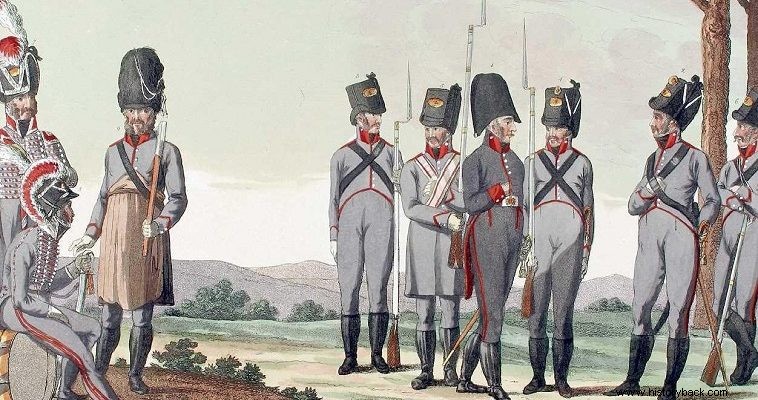
The Habsburg Empire was France's most persistent adversary from 1792 to 1815. A little-known aspect of its involvement in these wars concerns its ordinary national guards. In the Austro-Hungarian Empire there was a multi-ethnic state. In order to maintain his coherence he had to follow a particularly conservative policy.
This was also the reason why the regime did not want the formation of a national guard. However, after the defeat at Ulm and Austerlitz, in 1805, the new commander-in-chief and brother of the Austrian monarch, Archduke Charles of Habsburg managed to promote the formation of the national guard. The relevant decree was signed in 1808.
Each province of the Austrian state would form a number of national guard battalions. All men aged 18-45 who were not enlisted in the military and not subject to one of the many conscription exemptions were required to enlist.
The national guard battalions were organized on the basis of their "German" line infantry counterparts, having, in theory, a strength of 800-1,200 men. In fact, their regular strength did not exceed 750 men, with very few exceptions. The officers of the battalions came either from the local nobility, or from retired officers and non-commissioned officers of the army.
Based on the relevant decree, each national guard had the obligation to train for 21 days per year. Usually the men were trained in companies, in the cities and villages where they lived. They gathered every Sunday, after the divine service, in the squares and performed exercises in dense order.
The men's equipment was old. The national guards were equipped with Loth 6/4 muskets of 18.3mm caliber, which were in use by the army until 1798. But older muskets of the model of 1744 were also used. The non-commissioned officers carried, in addition to the musket, a small sword. The officers carried sword and pistol.
Due to economies and lack of ammunition, the National Guard rarely carried out training shots. The training program included four rounds with live cartridges and six rounds with blanks, to familiarize the men with the noise and strong recoil of the weapon. In each battalion a platoon of 30 men or, as the case may be, even a company of the battalion, was equipped with rifled rifles and fought as snipers.
These weapons were given to, presumably, the best men of the battalion. Each battalion fielded four to eight companies, with a theoretical field strength per company of 150-200 men. The battalions were included in brigades. Thus in Austria the brigades of Styria, Carniola, Carinthia, Salzburg and Trieste were formed, with a total of 34 battalions. A total of 55 battalions were formed in Bohemia and Moravia.
The national guards wore simple uniforms, similar to those of the army. The less well dressed wore only a coat. The uniforms were, depending on the battalion's area of formation, light gray or dark green. The clothes were also gray in color. Their equipment, otherwise, was identical to that of the line infantry.
The men carried a black holster and bayonet holster, suspended from white or black leather attachments. The bayonet was the same as that of the infantry. The non-commissioned officers also carried a wooden stick with which they would beat men who disobeyed their orders.
The national guards wore black, "Corsican-style" hats, but also hats, which they wore in their civilian life, during agricultural work, even half-high hats that were normally worn with a tailcoat. Some volunteer national guard battalions had better quality uniforms and equipment, the cost of which was paid for by the men themselves.
When the war of 1809 against France broke out, 100,000 National Guardsmen were drafted. National Guard battalions fought in the great battle of Bagram. But it was in the battle of Raab that they particularly distinguished themselves. In this battle, on June 14, 1809, on the river of the same name in Hungary, about 6,000 national guardsmen fought brilliantly against the veteran warriors of Eugène de Boarnet, causing them heavy losses.
After the defeat in this war, Napoleon demanded the dissolution of the national guard. In 1813, however, when the new war against the French broke out, the national guard was reorganized, and a battalion of it was attached to each regiment of infantry of the line, as its fourth battalion. Distinguished themselves in the operations in Germany, which resulted in Napoleon's defeat at the Battle of Leipzig. In 1814 the humble Austrian national guards invaded France.
